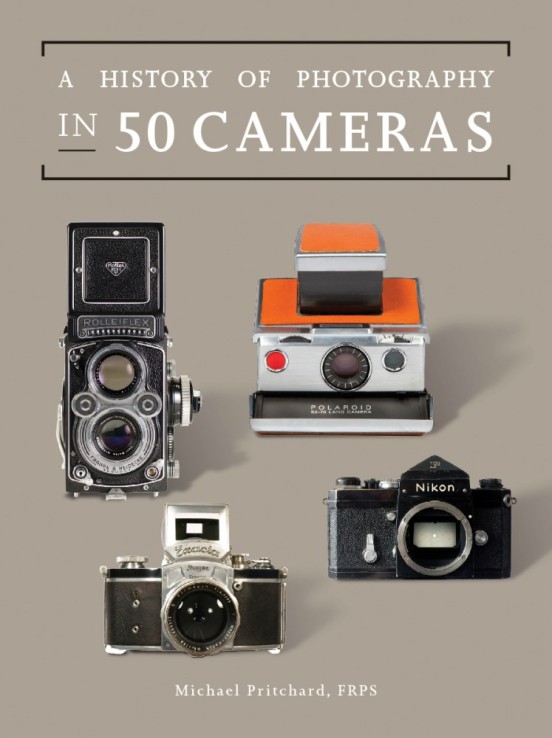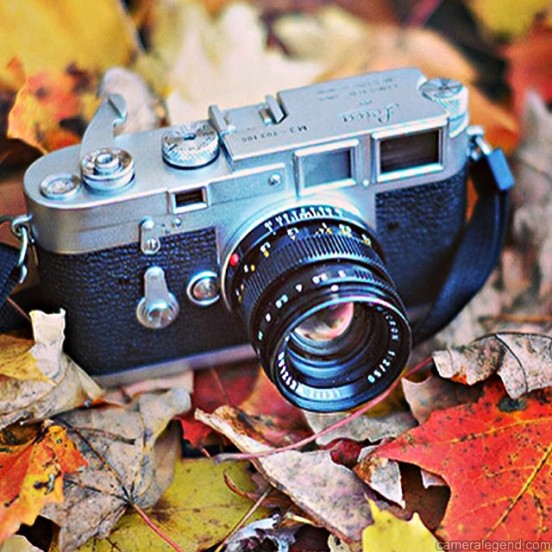
Photo courtesy of Firefly Books.
I love cameras, I really do. Chances are, if something led you to this site, you probably love cameras too. Ok, so now that we agree that we love cameras, how many of us REALLY love cameras?
I received a copy of this book for review and let me tell you, the author of this book REALLY loves cameras, but more importantly, he knows them too!
So you would think that with a site called “Camera Legend” intended to profile legendary, classic, and collectable cameras that I would already have this book. Unfortunately, I didn’t.
I used to collect photography magazines and maybe a handful of photography books, but like many of you, the internet changed me into a “virtual reader” who enjoys reading off the screen. When I received the book, I must say it felt so good to hold and read a real, physical book again!
THE AUTHOR
The author of this book is Michael Pritchard, who is the current director of the Royal Photographic Society, which has the distinction of being one of the world’s oldest photographic societies and is based in the UK.
THE BOOK AND ITS CONTENT
The book is attractive with four iconic cameras on the cover which are the Rolleiflex, the Polaroid SX-70, the Kine Exakta and the Nikon F.
Starting from the world’s first production camera, the Giroux Daguerreotype of 1819, the author, Mr. Pritchard takes us on a chronologically fascinating journey of the cameras and the photography they created through words and through the inclusion of some great illustrations and iconic pictures.
As an example the Leica I of 1925 is profiled and not only does the book contains great information on this legendary camera, but includes a profile of the photographer who made Leica synonymous with street photography, Henri Cartier-Bresson. This is nicely capped off with perhaps Cartier-Bresson’s most famous photo, “Place de l’Europe” from 1932.
This is the famous black and white photo of what appears to be a boy jumping/running on a flooded street with his reflection in the water. This is the photograph that many believe defined capturing “the moment.”

In addition to the Leica I of 1925, the Leica M3 of 1954 is also profiled in the book and is perhaps my favorite M body of all time.
There are many, many fascinating cameras profiled in this book from the ones you’d expect such as the Pacemaker Speed Graphic of 1947 and the Nikon F and the Pentax Spotmatic of the 60s and 70s to the eclectic such as the Scoville Book Camera of 1892 and the Ermanox of 1924 and into the future with the Nokia Lumia 1020 which I profiled here yesterday.

The 1947 Speed Graphic 4×5 large format camera is one of the cameras in the book as well as a look at perhaps its most famous operator Arthur “Weegee” Fellig.
One of the things I liked most about this book is the inclusion of the years the cameras were produced, the country they were produced in, and the manufacturer. I love those details!
There is a bit of a fast-forward towards the end of the book, especially when the book gets to the digital era. For example the Sasson digital camera of 1975, the world’s first digital camera was not included, although its inventor, Kodak engineer Steven Sasson is mentioned in the book.

“Into The Future.” The Nokia Lumia 1020 cell phone with its 41 megapixel sensor represents the future of photography and is profiled in the book. You can also find a review of this fascinating cell phone camera on this site as my most recent review before this book review.
I suppose this “fast-forwarding” has to do with trying to get only fifty cameras which I imagine, with all the cameras ever produced, would be hard for anyone writing this book. To his credit, Mr. Pritchard did a tremendous job and did make sound choices for his fifty cameras.
CONCLUSION
When I first saw the cover online, I immediately thought of a book I have called “Camera: A History Of Photography from Daguerreotype to Digital” by Todd Gustavson.
While Mr. Gustavson’s book is a large coffee table sized book, this one comes in a much smaller and more portable package. At least the copy I got.
In many ways, the books appear similar at first, especially when looking at the covers, but the truth is that there are not many good current books on cameras out there right now, so comparisons are inevitable.
While Mr. Gustavson’s book features more cameras, Mr. Pritchard does better by including a lot more information and sample photos, as well as profiles of photographers who used these cameras and/or made the cameras famous.
In summary, this is an excellent book that will not only appeal to camera lovers, but photography and history buffs as well. The cameras, photographs, and photographers highlighted in this book are well selected and the author, Michael Pritchard is about as high an authority on cameras as you can get so you know you are getting accurate information.
If you love cameras and photography this book belongs in your collection. Even if you, like I, live in a virtual world where everything is “disposable” and you no longer buy books or haven’t bought one in a while, “A History of Photography In 50 Cameras” deserves a spot on your shelf of Camera Legends.
WHERE TO BUY
The book may be bought directly from Firefly Books or AMAZON.
I need to read this book 🙂 loved your review.
LikeLiked by 1 person
Thank you very much!
LikeLike